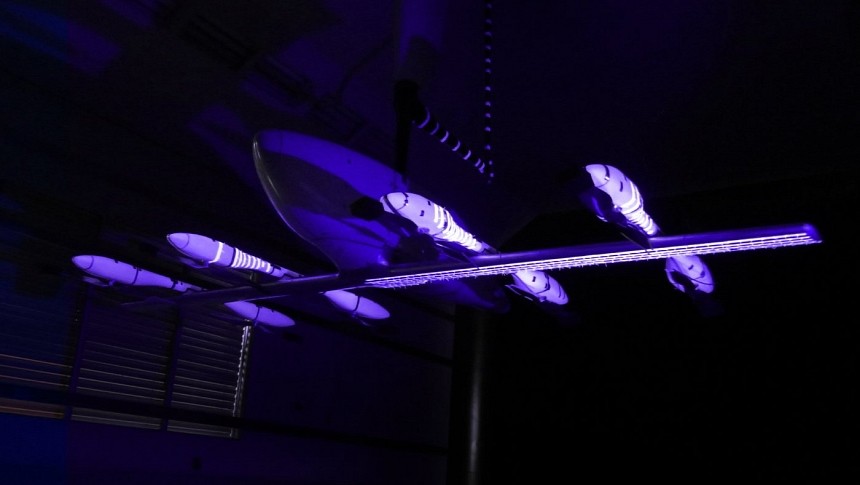After Joby and Lilium, it's Eve Air Mobility's turn to take the next step in developing a commercially-viable eVTOL (electric vertical take-off and landing).
If we were to envision a world map of eVTOL design, Eve Air Mobility would proudly represent Brazil. Latin America doesn't stand out when it comes to electric air taxi design, even though multiple operators in the region have already committed to future AAM (Advanced Air Mobility) operations.
Eve could be the one to introduce a locally-made alternative to conventional aircraft, and it has huge potential for success because it's not a young startup but the AAM branch of a well-respected aviation leader, Embraer.
An impressive number of eVTOL developers have paraded their interesting concepts for the past years. Now it's time for a new phase of intensive testing in preparation for a tight 2025 deadline (this is when most players in this emerging industry plan to launch commercial service).
This phase includes complex wind tunnel testing, similar to traditional aircraft. Earlier this year, the California-based Joby broke the ice with sophisticated tests at the world's largest wind tunnel testing facility at NASA's Ames Research Center in Silicon Valley.
The German Lilium followed soon, opting for the largest wind tunnel of its kind in Europe, the DNW (German-Dutch Wind Tunnels) in Marknesse, Netherlands.
Eve Air Mobility is the latest to join the club. It also chose Europe but went for a regular wind tunnel located close to Lucerne, Switzerland. The tests were performed on a future Eve air taxi prototype, focusing on the performance of major components, from rotors to tail, in flight.
With this new milestone completed, the aircraft manufacturer can move confidently on the path toward certification. Compared to other manufacturers, Eve Air Mobility has been mysterious in regard to its future air vehicle. So far, we know very little.
Firstly, it combines dedicated rotors for vertical flight with fixed wings for operating like a traditional airplane in what is known as a "lift and cruise" configuration. It's designed as a multipurpose aircraft that can be adapted for different types of operations in urban settings. Initially, it will operate with a pilot onboard and eventually transition to self-flying missions. Performance-wise, it leans on the short-range side, claiming to cover 60 miles (100 km) on a single charge.
Although it hasn't been that generous regarding technical specs, the Brazilian AAM company wasn't shy about sharing its success. By the end of last year, it had already secured an impressive number of pre-orders, amounting to nearly 3,000 units, with customers from all over the world, including India and Dubai.
A full-size mockup of the future air taxi cabin was also on display for the first time in 2022 at the Farnborough International Airshow in the UK. The Brazil-based eVTOL developer hopes to launch its electric air taxi in 2026 officially.
Eve could be the one to introduce a locally-made alternative to conventional aircraft, and it has huge potential for success because it's not a young startup but the AAM branch of a well-respected aviation leader, Embraer.
An impressive number of eVTOL developers have paraded their interesting concepts for the past years. Now it's time for a new phase of intensive testing in preparation for a tight 2025 deadline (this is when most players in this emerging industry plan to launch commercial service).
This phase includes complex wind tunnel testing, similar to traditional aircraft. Earlier this year, the California-based Joby broke the ice with sophisticated tests at the world's largest wind tunnel testing facility at NASA's Ames Research Center in Silicon Valley.
The German Lilium followed soon, opting for the largest wind tunnel of its kind in Europe, the DNW (German-Dutch Wind Tunnels) in Marknesse, Netherlands.
Eve Air Mobility is the latest to join the club. It also chose Europe but went for a regular wind tunnel located close to Lucerne, Switzerland. The tests were performed on a future Eve air taxi prototype, focusing on the performance of major components, from rotors to tail, in flight.
With this new milestone completed, the aircraft manufacturer can move confidently on the path toward certification. Compared to other manufacturers, Eve Air Mobility has been mysterious in regard to its future air vehicle. So far, we know very little.
Firstly, it combines dedicated rotors for vertical flight with fixed wings for operating like a traditional airplane in what is known as a "lift and cruise" configuration. It's designed as a multipurpose aircraft that can be adapted for different types of operations in urban settings. Initially, it will operate with a pilot onboard and eventually transition to self-flying missions. Performance-wise, it leans on the short-range side, claiming to cover 60 miles (100 km) on a single charge.
Although it hasn't been that generous regarding technical specs, the Brazilian AAM company wasn't shy about sharing its success. By the end of last year, it had already secured an impressive number of pre-orders, amounting to nearly 3,000 units, with customers from all over the world, including India and Dubai.
A full-size mockup of the future air taxi cabin was also on display for the first time in 2022 at the Farnborough International Airshow in the UK. The Brazil-based eVTOL developer hopes to launch its electric air taxi in 2026 officially.








